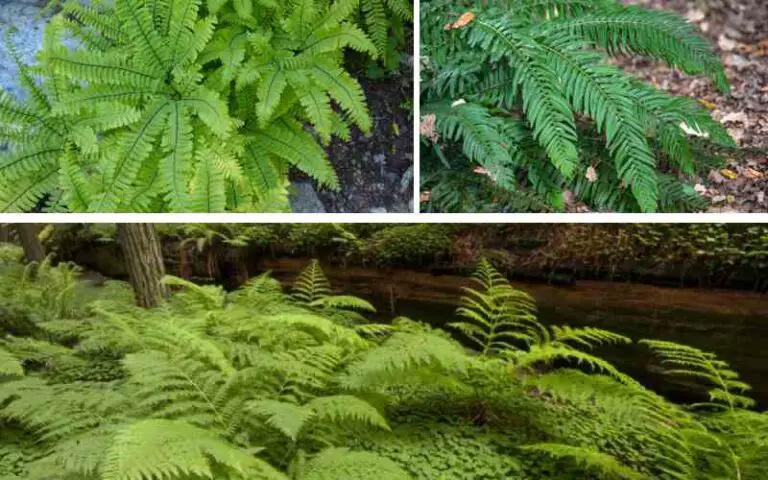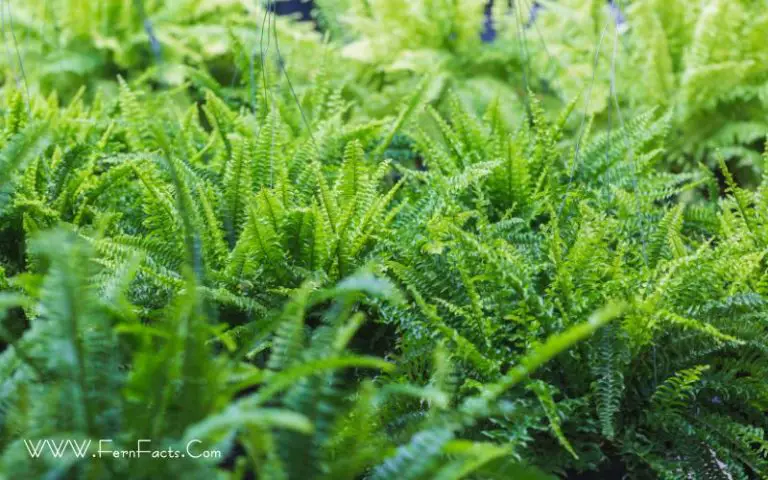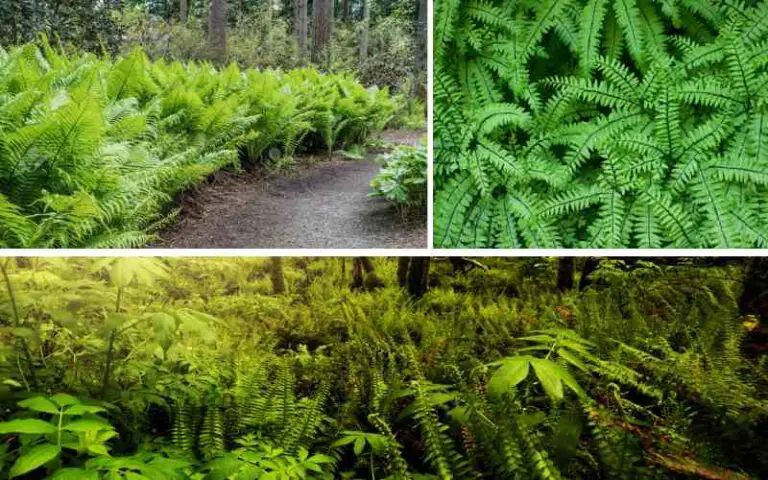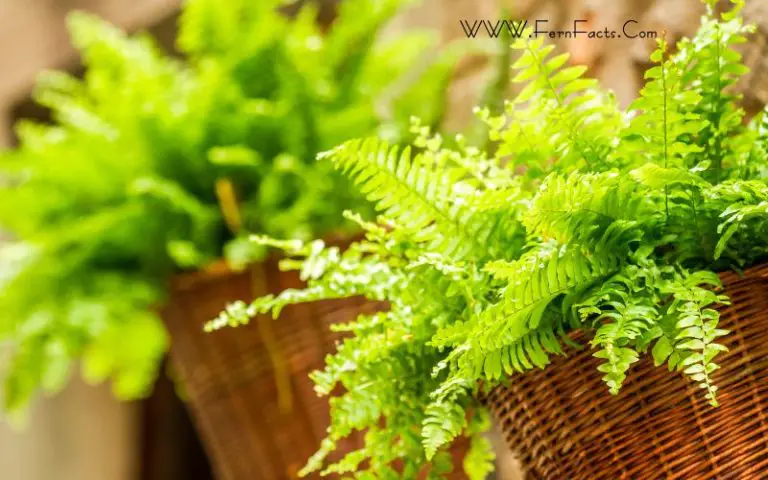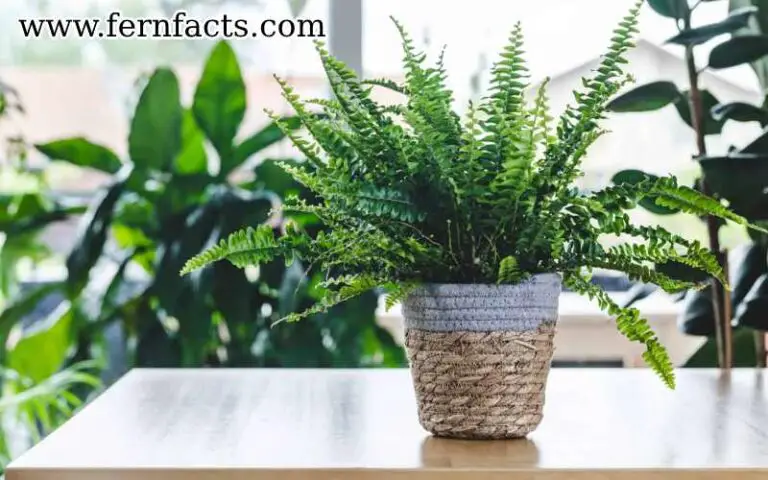A Guide to the Best Ferns for Clay Soils
Being a plant lover, I have gathered an abundance of learning and experiences through my own grading and plants. Therefore, if your garden has clay soil? And don’t know which plants would be better for your garden. Well, don’t need to be worried. In this article, I’ll share my top 5 ferns that you can plant in your garden’s clay soil.
So, I’ll give a general idea about clay soil and its benefits along with tips to improve your clay soil so that you can have a clear understanding of your soil’s components. By understanding all these components of your soil, you can make your plants thrive. So, let’s go for the comprehensive guideline for your garden clay soil.
Top Best Ferns for Clay Soils
As fern are extremely versatile plants and can give your garden a greenery look. Sometimes not planting the correct fern according to your soil component can be more discouraging. It might give you a big challenge as a beginner. That is why, let’s see which fern you can grow in the clay soil.
1. Male Fern
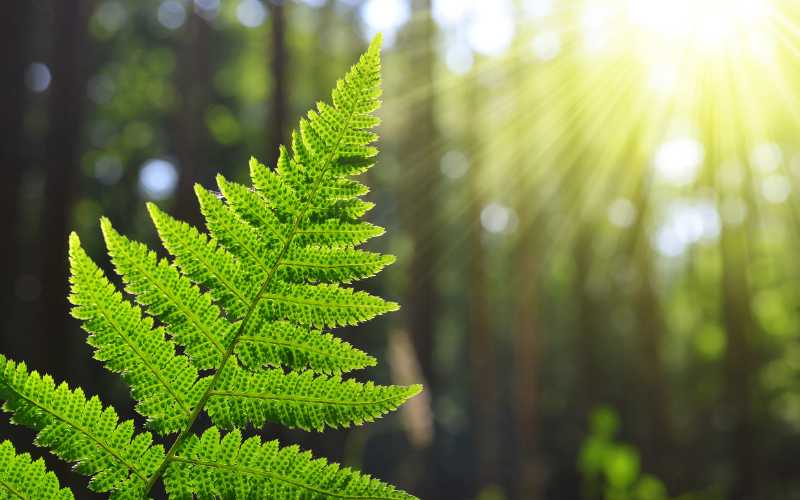
Male fern, Dryopteris filix-mas is a fern that you can grow in clay soil. These ferns are very common in the Northern Hemisphere like Europe, Asia, and North America. This male fern is a deciduous fern which means it will lose its fronds at the end of the season and will be dormant in the winter seasons or until the nest year.
These fern species prefer partial or full shade for their growing. These fern species’ height extended up to 1.5 m or 150 cm long. If you want to grow any fern in your clay soil, then this Male fern would be the best option for you. These species barely need much maintenance or care, especially after being planted. This male fern can adapt itself to the environment. And so, they can survive through the dried soil as well. However, you need to maintain Soil moisture levels to give them healthy growth.
For mixing the soil of these plants, you need to mix acid, neutral or alkaline in it. Besides, also maintains the draining system because these plants have the adaptive quality but still they can not survive the dryness for a longer period of time. Similarly, this Male fern also needs partial sunlight or shade for growing. Although it can survive in full sun, you cannot always keep them in the sun.
2. Bird’s-nest Fern/ Nest Fern
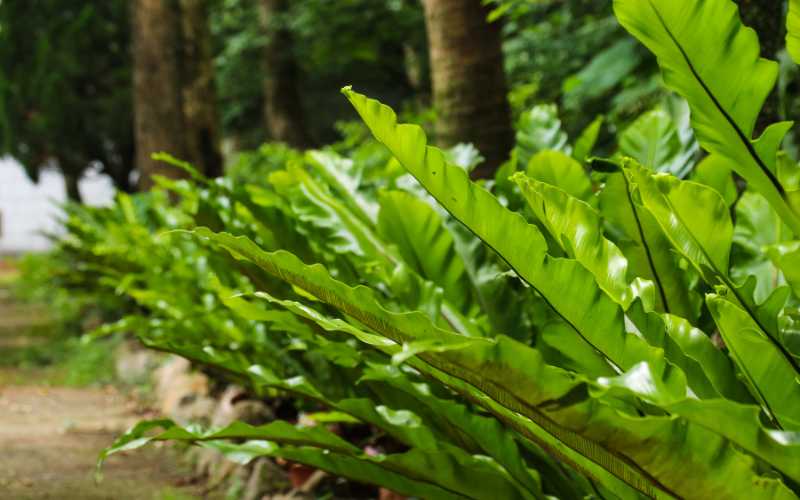
The Bird’s nest fern, Asplenium nidus, is another fern that you can plant in your clay soil. These plants are very common in southeastern Asia, eastern Australia, Hawaii, India, and eastern Africa. These species’ fern fronds are almost similar to banana leaves. They are the evergreen plants which means they will have fronds throughout all the seasons of the year and this will also not go under the dormancy stage.
These nest fern plants also require partial or fully shaded places with warm and humid places to flourish. They can be up to 50 to 150 cm tall in height and 10 to 20 cm broad. As I have already mentioned, these fern’s fronds are mostly similar to banana leaves. That is why their fronds are not typical fronds, rather they have long feathery fronds. Besides, their fronds can go over 5 feet long depending on the different cultivation and variety of these species. This nest fern can also grow well in clay soil but you have to keep the soil moisture level. In order to make their soil, you need to mix acid or neutral in it.
Remember, they need moist soil, not dry soil. They will not survive in the dry soil as they require moisture in their soil. In the wild, this fern can grow by wrapping its roots around the trees and can grow in pockets where rainwater can accumulate. So, you can also grow them in your garden by wrapping them up with any tall tree or any poll.
3. Western Sword Fern
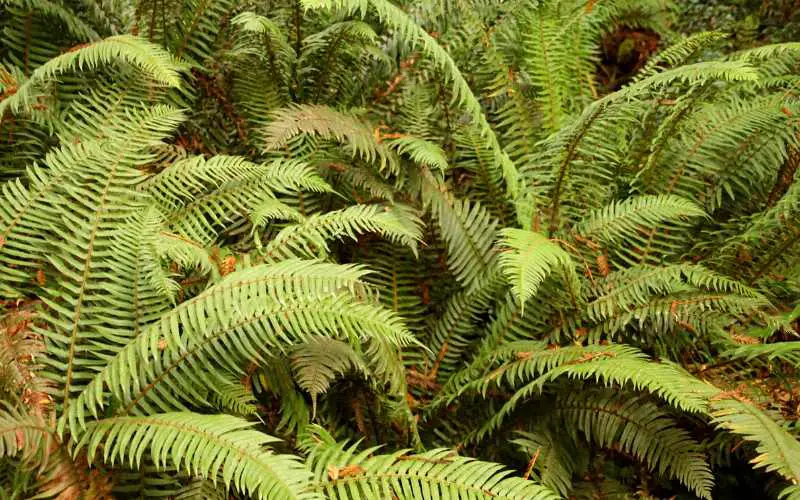
Western sword fern, Polystichum munitum can be the best option which you can grow into your clay soil. They are evergreen plans that are mostly native to North America’s forest areas. You can also find them on the Pacific coast, Alaska, California, and Colombia. Their preferred habitats are moist coniferous woodlands that keep their soil well hydrated.
This Western sword fern can grow up to 1.5 meters long by distributing its fronds up to 50 to 180 cm. Far away, you can observe their shape in a tall and round base. Similar to the other two plants, these species also require partial or fully shaded brighter places. They can handle a variety of types of soil mixtures as long as the soil is moist. In order to grow these fern plants in your garden, you need to make acidic soil with rich humus and stones. This rich humus will maintain the soil’s nutrients and moisture. Constancy in the moisture of the soil will help them to grow and flourish.
Still, you need to give them well draining accommodation so that they can maintain their moisture level. Although, they can survive a certain period of dryness but not longer than it. You need to give them water by maintaining the moisture level in their soil. These fern species can also grow up to 6 feet tall if they get their ideal condition of living. They will grow best under the shade of any tree.
4. Lady Fern
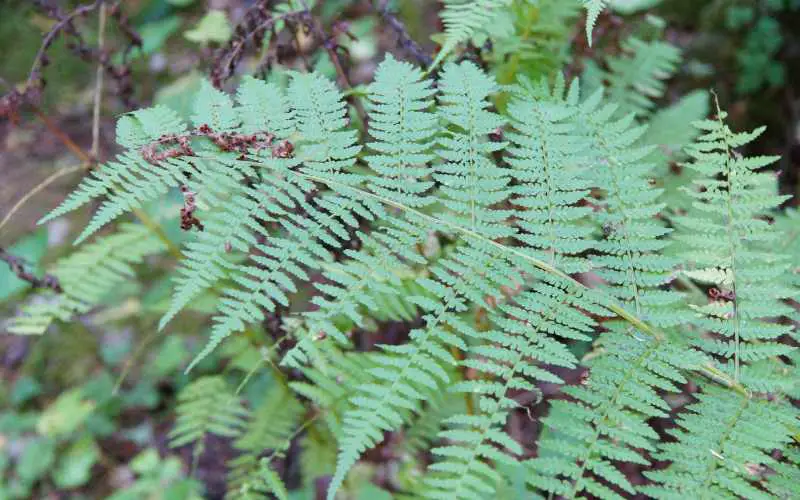
Lady fern, Athyrium filix-femina is another fern species that can be considered your garden clay soil. They are deciduous plants that will lose their leaves on a seasonal basis and will bloom again next year. These feathery ferns are local to Asia, Europe, North Africa, the United States, and Canada.
They can also survive in Alaska with the right environment. They can grow best in damp moist, shady woodland areas. This Lady fern can tolerate -20° C or -4° F of the environment. Their fronds are light yellow-green in color. Their height can reach up to 1.5 meters long.
These lady ferns are also considered one of the easy-growing ferns among other fern species. they prefer fully shaded places with the right moisture level in them. However, they can still survive under the full sunlight conditions if their soil is moist enough. You can mix their soil with acid or neutral in it.
As they have poor drainage tolerance, you need to give them a well draining system so that extra water can be drained out easily. Moreover, it will be a great option in your garden that will give your garden a greenery look due to its light green color.
5. Royal Fern
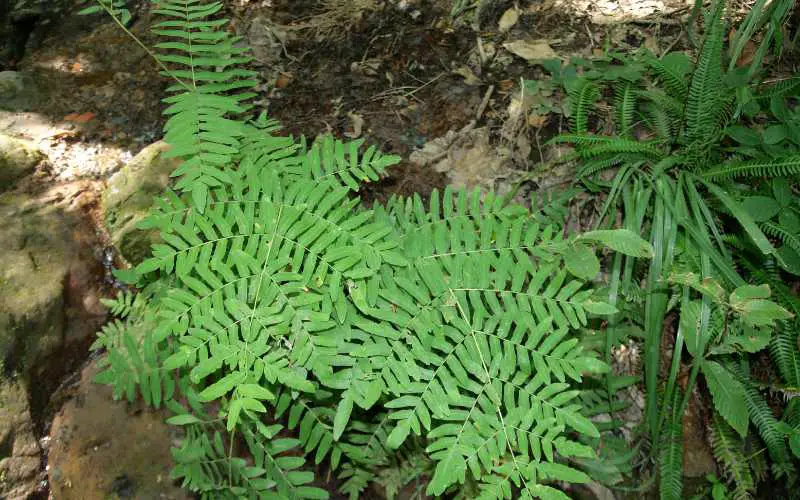
Royal fern, Osmunda regalis fern can also be planted in your garden clay soil. They are deciduous plants and will be dormant and lose their fronds at seasonal times. These plants are very local in Europe, Africa and Asia. Their favorable habitat places are the moist woodlands or the banks of the streams. These ferns are spreading up to 160 cm tall and up to 40 cm broad. Although their fronds are shorter, around 20 to 50 cm long.
This royal fern also can tolerate any kind of mixing of soil and climate change. If you want to grow these ferns in your garden, you need to make acidic soil with neutral, mild alkaline. They can grow in semi-shaded places or no-shaded places as well as long as their moisture level is maintained in the soil. As they prefer moist or wet soil, you need to water them by maintaining their water level in the soil. Do not pour too much that can rot their roots.
Understanding Clay Soil
If you want to grow your ferns in clay soil, you have to have a better understanding of this soil. Clay soil is basically composed of fine mineral particles where it doesn’t have many organic materials. Usually, this clay soil is very sticky and holds more water compared to other Soils. If your soil tends to puddle on the ground apart from mixing or soaking in the soil, then probably you have clay soil in your garden. You can test your garden soil whether it’s clay soil or not. If your garden soil consists of more than 50% particles of clay that means your garden has heavy clay soil. Heavy clay soil sometimes gives obstacles to your plants.
Benefits of Clay Soils
If your garden has clay soil, lots of benefits you will get from your garden soil. Because this clay soil holds the density in the soil and maintains the moisture level of the soil. Besides, it has more nutrients and rich humus than other soils.
The particles of the clay soil are basically negatively charged, which means they can easily get attracted to the positively charged particles of the soil like calcium, potassium, magnesium, etc. Additionally, plants can get a grip on the soil where they can keep their roots and fronds well nutrients, and moisture.
Improving Your Clay Soil
However, your garden clay soil might need some improvements so that it can provide proper nutrients to your plants. By improving the structure of your soil, you can provide your plants healthy rich nutrients to them where they can thrive properly.
Most of the plants cannot survive if garden soil has much clay or sand in it. Therefore, your garden soil will require a good mixture of clay, sand, and organic materials in it. Sometimes, too much clay might be harmful to your fern plants because they cannot grow or spread their roots through the soil because of the sticky texture of the soil.
In order to mix the right amount, you need to use manure, leaves, compost, and sawdust in your soil. Then you need to mix those organic matter with the top soils like 6 to 12 inches of your soil. You can also use a shovel to mix up your soil particles. Similarly, you will need to remix all the particles or compost once or twice a year. It will give balanced soil compost to your garden plants.
Conclusion
In short, clay soil can be heavenly particles in your garden with the correct amount of mixture and care. However, you can grow male fern, Lady fern, royal fern, Western sword fern, and nest fern in your clay soil. These fern plants can cope with clay soil conditions even if your clay soil contains a high pH level and a poor drainage system.
Thus, all these ferns mentioned above in the article can do well in your clay soil even if it’s not a well-mixtured soil. Nonetheless, you can improve your clay soil structure by giving the right particles so that your chosen fern can thrive in it.



